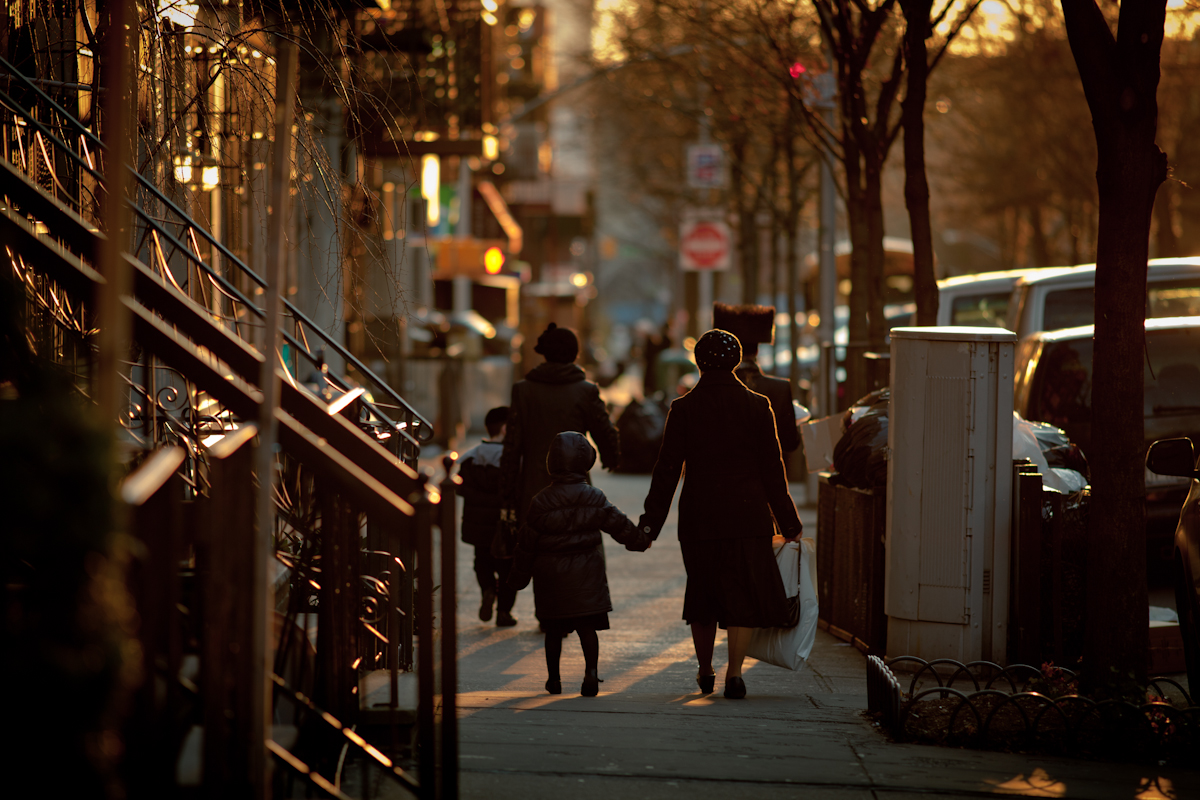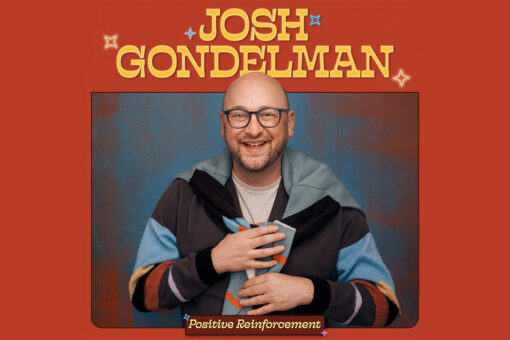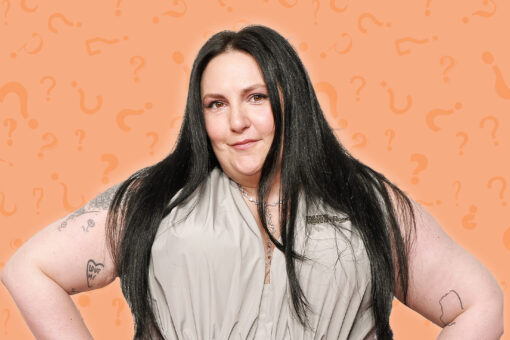“Excuse me, are you Jewish?”
I heard this as I emerged from the Bedford Avenue stop on the L train a few months into my first year of living in Williamsburg, Brooklyn. There stood a boy with payot—those curly tendrils Orthodox men and boys wear on each side of their face—a white shirt, and a black vest holding boxes of Hanukkah candles. After answering his question in the affirmative, the boy handed me a box of the candles and a cheap menorah for me to use in celebrating the festival of lights.
As I walked away with candles in one hand, menorah in the other, I thought, How could he tell I was Jewish? My brown hair, my nose? I felt a certain but unexpected sense of pride in being recognized—me, a secular Jew—by this Hasidic child.
Then I heard him ask a pert-nosed blond couple the same question (to which they shook their heads) and realized the boy was asking everyone who stepped off the train.
Still, that sense of pride, or whatever it was, came home with me to my basement apartment in South Williamsburg, just a few blocks north of the neighborhood’s Satmar Hasidic community. What about my Hasidic encounter made me feel this way, and was this “pride” appropriately placed? I decided to find out the extent to which the ultra-Orthodox Jews in my neighborhood and I shared an identity.
*
There are about 400,000 Hasidim in the world, according to Wikipedia and other internet speculators. Of those, the second highest concentration lives in the United States (after Israel), with the majority centered in New York and New Jersey. Borough Park, Crown Heights, and Williamsburg (all neighborhoods of Brooklyn) boast particularly large populations of Hasidim.
My grandmother, whose family immigrated to New York in the early 20th century from Russia via England, lived in Williamsburg as a young girl. This led me to wonder if she was connected in any way to its current Hasidic inhabitants. I looked into this to see if the connection rang true. For the most part, it didn’t.
While many of the Hasidic Jewish communities in Brooklyn originally came from Eastern Europe, like my family, the Williamsburg Satmar came specifically from Hungary. The biggest Hasidic sect in the world, they originated in the early 1900s in the Hungarian town that is their namesake.
The only way the Satmar aligned with my Jewish family was via Eastern European culture. Apparently, their clothing better reflects the cultural practices of Eastern European Jews than religious ones, even though their garments—long, black jackets and shtreimel, the large, furry hats men wear—have come to take on religious significance.
And then there’s their use of Yiddish, which I’d bothered to learn in college because my great grandparents, I was told, had been fluent. Some of it had passed along to my grandfather, but my parents only knew the obvious terms (schlemiel, schlep). I felt compelled not to let a supposedly “dying language” die. When I moved to Williamsburg, the death of Yiddish felt much less imminent.
So my family didn’t likely share roots with the Hasidim of Williamsburg. But we did share Yiddish, and holidays. Every year during Sukkot, I got a familiar feeling walking through South Williamsburg and seeing all of the Hasidic families’ balconies decked out in leaves and covered in small roofs for outdoor sleeping. I’d never slept in a sukkah, but I’d helped decorate one every year until I turned 13 and stopped going to Hebrew School.
*
My roommate in Williamsburg, a secular Jew like myself, and I used to talk about how we felt when our non-Jewish friends made fun of the local Hasidim. They would comment on their “funny hats,” the women’s wigs, and their widely held status as “slumlords” in our neighborhood.
My roommate said she’d tell these people that she identified more with non-Jews than the Hasidim—but deep down, she didn’t know if that was true. I felt similarly. While I definitely felt comfortable commenting on their slumlord status (our apartment wasn’t very nice, and our Hasidic management company was not forthcoming with repairs), I cringed when I heard negative comments about Hasidic women who had to shave their heads, a modesty-fueled obligation for women in the community once they get married.
Still, I wasn’t ready to outright defend a basically foreign culture that seemed less than keen on women’s rights. So my roommate and I continued to muse: Did our shared Jewishness with the Hasidim trump our overwhelming cultural differences?
*
When I signed my first lease in Williamsburg, I met with a Hasidic man who worked for the building’s management company. After signing, I went to shake his hand, which he drew back immediately. Hasidic men don’t touch women to whom they aren’t related. I remember feeling indignant. Later, when I had to use the bathroom in his company’s building, I took pleasure in disposing of my tampon in the trash. Leaving my menstrual blood in the building felt like the least I could do to reassert my equality as a woman.
My roommate said she’d tell these people that she identified more with non-Jews than the Hasidim—but deep down, she didn’t know if that was true.
Through my years of renting from Hasidic management groups, I learned that while the men appeared as the faces of the business, women did most of the day-to-day work behind the scenes. They “typically have a better command of English and math” than the men, according to a New York Times article, because girls “wind up with a more secular education” while the boys study religion, the Talmud. This is likely why it was my landlord’s wife who would call us when the rent was late or when we had any logistical concerns about the apartment.
I’d long assumed that Hasidic women were repressed in ways that prevented them from having “outside” skills. Being extremely insular—they have their own courts and cops—Hasidic communities don’t aim to equip their members for dealings with the world outside their community. However, with religion as the men’s realm and more practical, everyday skills that of women, the latter ended up more prepared to deal with outsiders. Looks like I had more in common with Hasidic women than I previously thought.
*
I still have the menorah I got from that Hasidic boy my first year in Williamsburg, and I’ve gotten Hannukah candles from others every year since. Instead of waiting for them to ask me if I’m Jewish, I approach them and tell them I am.
The pride I feel when they hand me those candles, I realize, comes from embracing an identity that makes me feel at home in a neighborhood I moved to as an adult—and one that my grandmother lived comfortably in as a child. Though interacting with the local Hasidim isn’t a path for me to return to my roots, it is a way for me to guarantee someone other than my family back in Boston wishes me a “Happy Hanukkah” every year.
Photo via Flickr/Several seconds



